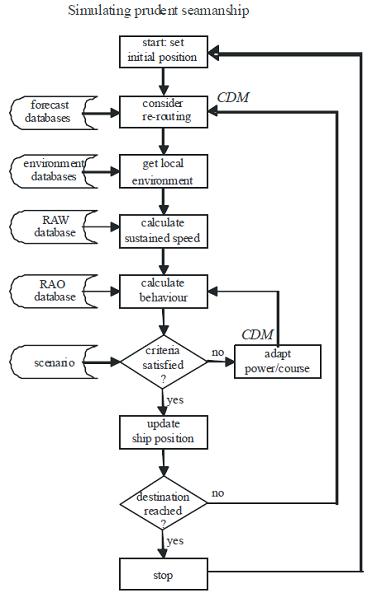Scenario Simulations
Backgrounds
While the techniques for the numerical prediction of ship resistance, propulsion and sea keeping become increasingly practical, the integration of hydrodynamics in a balanced design is lagging behind. Investments in ship size and power, the structural capacity to resist fatigue and ultimate loads and equipment to facilitate specific operations, like motion control, are still largely determined on basis of experience. In practice “Life-cycle evaluation”, “design for service” and “design on first principles” are still farfetched concepts. A situation that leads to sub-optimal design and performance. For some time design on first principles was unimaginable because detailed insight in the encountered environmental conditions and the way the crew managed the ship as well as tools to integrate this knowledge with hydrodynamics were simply missing. However, in the last decade this situation has changed. Large scale remote sensing, experience from on-board monitoring campaigns and the development of tools for scenario simulations have lead to a more complete understanding that is gaining credibility. Not only the available technology is changing; also the demand for more transparent and specific design is increasing. The world find it increasingly hard to accept the lack of transparency inherent to experience and rule based design.

Objectives
The objective of the projects is to define the merits of scenario simulations.
Expected Results
The objective will be achieved by performing two pilot studies. One focusing on the effect of prudent seamanship on fatigue and extreme wave load effects on a large containership. The other focusing on memory effects in the wind-wave-swell climate, and the sub-stages, on the predicted performance of a naval search and rescue operation.
Besides addressing the differences in results between a conventional statistical approach and one incorporating scenario simulations, the main outcome will be the merits of the latter compared to the former on the level of necessary assumptions and possibilities in addressing relevant issues such as the subjects of the two pilot studies.
